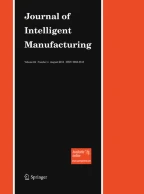Abstract
This paper considers co-investments in a supply chain infrastructure using an inter-temporal investment model. We assume that the supply chain firms’ capital consists essentially of an investment in the supply chain’s infrastructure. As a result, firms’ policies consist in selecting both an optimal level of employment and the level of co-investment in the supply chain infrastructure. Recent papers by Kogan and Tapiero (Eur J Oper Res 2009; Supply chain games: Operations management and risk valuation. Springer, Boston 2007) have presented open-loop and feedback solutions for non-cooperating firms and have shown that these solutions differ from a unique system-wide optimal solution, which maximizes the overall supply chain profit. To overcome this problem and thereby improve the supply chain performance, this paper suggests a coordination approach. Such an approach is consistent with a recent practice which consists in the creation of a supply chain shared capital (or joint funding of selected activities) with a temporal reward (or penalties) offered to non-cooperating firms for each dollar investment they make. In addition, this paper provides a closed form expression for the time sensitive rewards function expressed in terms of the system parameters. We show that when these rewards are offered, the Nash co-investment equilibrium is equal to the system-wide optimal solution.
Similar content being viewed by others
References
Adler H. (1987) Economic appraisal of transport projects. Johns Hopkins University Press, Baltimore
Aschauer D. A. (1989a) Is public expenditure productive. Journal of Monetary Economics 23: 177–200
Aschauer D. A. (1989b) Does public capital crowd out private capital. Journal of Monetary Economics 24: 171–188
Berndt, E. R., & Hansson, B. (1991). Measuring the contribution of public infrastructure in Sweden, NBER, WP 3842
Button K., Pearman A. (1983) The practice of transport investment appraisal. Avebury Gower Publishing Co, Aldershot, Hants, UK
Cachon, G., & Netessine S. (2004). Game theory in supply chain analysis. In D. Simchi-Levi, S. D. Wu, & Z.-J. Shen (Eds.), Handbook of quantitative supply chain analysis: Modeling in the eBusiness era. Netherlands: Kluwer.
Gillen D. W. (1996) Transportation infrastructure and economic development: a review of recent literature. The Logistics and Transportation Review 32(1): 39–62
Gramlich E. M. (1994) Infrastructure investment: A review essay. Journal of Economic Literature 32(3): 1176–1196
Grossman S., Hart O. (1986) The costs and benefits of ownership: A theory of vertical and lateral integration. Journal of Political Economy 94(4): 691–719
Gunasekaran A. (2004) Editorial, supply chain management: Theory and applications. European Journal of Operational Research 159: 265–268
Hoffman, K., West, C., Westley, K., & Jarvis, S. (2005). Opportunities and challenges for the international development community and big business, The report by the Shell Foundation.
Holtz E. D., Schwartz A. E. (1995) Infrastructure in a structural model of economic growth. Regional Science and Urban Economics 25(2): 131–151
Kamien M. I., Li L. (1990) Subcontracting, coordination, flexibility and production smoothing in aggregate planning. Management Science 36(11): 1352–1363
Kogan K., Tapiero C. S. (2007) Supply chain games: Operations management and risk valuation. Springer, Boston
Kogan K., Tapiero C. (2009) Optimal co-investment in supply chain infrastructure. European Journal of Operational Research 192: 265–276
Li X. H., Wang Q. (2007) Coordination mechanisms of supply chain systems. European Journal of Operational Research 179(1): 1–16
Mieghem J. (1999) Coordinating investment, production, and subcontracting. Management Science 45(7): 954–971
Meskens N., Riane F. (2006) Editorial, supply chain issues and opportunities. European Journal of Operational Research 169: 994–995
Munnell A. H. (1992) Infrastructure investment and economic growth. Journal of Economic Perspectives 6(4): 189–198
Nijkamp P., Blaas E. (1994) Impact assessment and evaluation in transportation planning. Kluwer Academic Publishers, Amsterdam
Sanchez-Robles B. (1998) Infrastructure investment and growth: Some empirical evidence. Contemporary Economic Policy 16(1): 98–108
Stadtler H. (2005) Supply chain management and advanced planning—basics, overview and challenges. European Journal of Operational Research 163: 575–588
Tapiero C. S. (1998) Applied stochastic models and control in Finance and insurance. Kluwer Academic Press, Boston
Venkatesan R. (1992) Strategic sourcing: To make or not to make. Harvard Business Review 70(6): 98–107
Author information
Authors and Affiliations
Corresponding author
Rights and permissions
About this article
Cite this article
Kogan, K., Tapiero, C.S. Coordination of co-investments in supply chain infrastructure. J Intell Manuf 23, 2471–2475 (2012). https://doi.org/10.1007/s10845-011-0513-9
Received:
Accepted:
Published:
Issue Date:
DOI: https://doi.org/10.1007/s10845-011-0513-9
